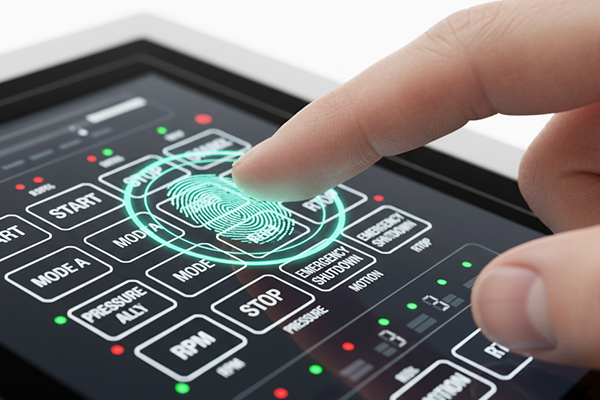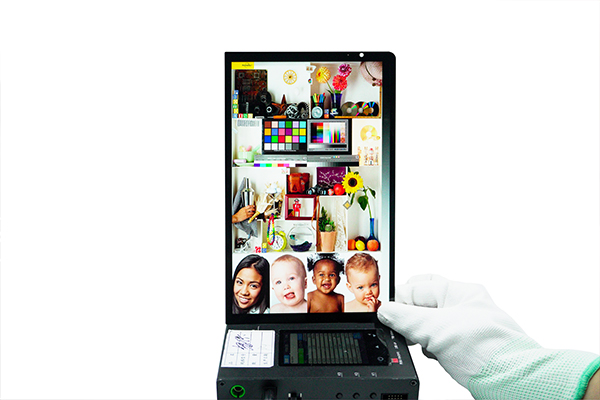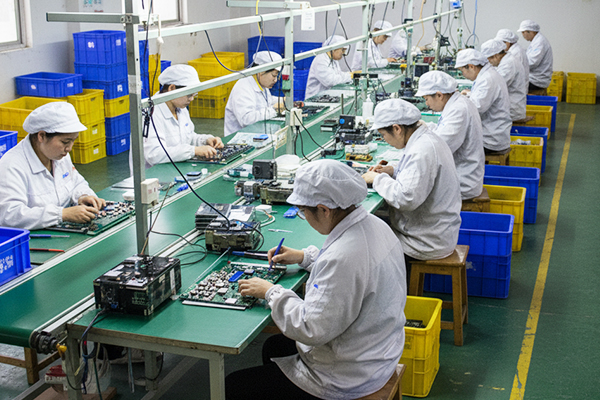
 Global Hotline
Global Hotline
In today’s world where touch devices are ubiquitous, have you ever wondered why our smartphones respond to a light swipe, while supermarket POS machines or hospital registration kiosks often require a firm press? The secret lies in the fundamental differences between the two core touch technologies – capacitive and resistive screens.
Resistive Screens: Pressure Sensing
It resembles a soft film, composed of two conductive layers. When you press down with a fingernail or stylus, the two layers make contact, and operation is achieved by calculating the position of the "pressure point." It is a passive form of touch.
Capacitive Screens: Charge Sensing
Its surface is a piece of hard glass, embedded with transparent electrodes. When you touch it with your finger (which carries the human body's weak bioelectricity), a coupling capacitor is formed, which "draws away" a tiny amount of current from a localized area of the screen. Positioning is achieved by precisely calculating this change in current. It is an active form of touch.

Based on different principles, they offer vastly different experiences in practical use:
Feature Comparison | Capacitive Screens (Mainstream Choice) | Resistive Screens (Classic Technology) |
Touch Method | Humanized Touch: Only responds to fingers (or dedicated capacitive stylus), extremely sensitive. | Pressure Touch: Responds to any object: finger, nail, stylus, etc. |
Operation Experience | Smooth as Silk: Supports multi-touch, easily enabling complex gestures like zooming and rotating. Operation is fluid and responsive. | Single-point Clicking: Only supports single-touch. Cannot perform multi-finger gestures. Operation can feel slightly cumbersome. |
Clarity & Hardness | Crystal Clear: Glass surface, high light transmittance, brighter and more vibrant display. High Mohs hardness, more scratch-resistant. | Faint & Soft: Plastic film surface, lower light transmittance, display quality can be affected. Softer surface, prone to scratches. |
Precision & Durability | Accurate & Long-lasting: High precision, hard surface, very long lifespan. | Requires Calibration: Relatively lower precision, may require calibration after long-term use. Film layer is easily damaged by scratches. |
Environmental Adaptation | Ideal for Daily Use: Higher environmental requirements; may not respond with regular gloves or if water stains are on the screen. | Specific Scenarios: Unaffected by water, dust, oil; still valuable in specific environments like industrial or medical settings. |

The value of technology lies in its application. These two technologies shine in different fields due to their unique attributes:
The World of Capacitive Screens (Pursuing Experience and Efficiency)
Smartphones & Tablets: Provides an irreplaceable, smooth, and responsive experience for swiping, zooming, and gaming controls.
Smart Home Control Panels: A light touch controls lighting, air conditioning, and music throughout the home, with glass panels offering aesthetics and durability.
Modern Car Displays: Smooth map zooming and menu switching inject a sense of technology and convenience into the cockpit.
Bank ATMs & Self-service Kiosks: Responsive and intuitive interface improves efficiency for user transactions.
Commercial Displays & Interactive Billboards: High clarity and smooth interaction effectively attract customers and convey brand image.
The Domain of Resistive Screens (Specific Environments & Needs)
Industrial Control Systems: Allows stable operation by workers wearing gloves on the factory floor, unaffected by oil or dust.
Medical Equipment Interfaces: Enables precise operation with specialized styluses in hospital environments, easy to sterilize and prevents accidental touches.
POS Machines & Signature Pads: Customers can confirm signatures using any hard object (even a nail), cost-effective and reliable.
Outdoor Sports Equipment & Rugged Devices: Ensures basic operational stability in harsh weather or complex environments.

Why We Choose and Optimize Capacitive Screens?
The answer lies in our relentless pursuit of "Human-centric Experience."
Capacitive screen technology perfectly aligns with modern users' expectations for smart devices: intuitive, smooth, efficient. It transforms cold clicks into a dance of fingertips and complex commands into natural swipes and zooms. This seamless, immersive way of interacting not only enhances efficiency but also brings joyful emotional connection.
We deeply understand that no single technology fits all scenarios. However, in the consumer electronics field where the ultimate user experience is pursued, capacitive screens, with their unparalleled intuitiveness and fluency, are undoubtedly the present and the future.
Choosing us means choosing a more advanced and natural way of interaction.
Explore KANOU's products and experience the fingertip revolution that capacitive screen technology brings to your smart life, business offices,
and industrial innovation.